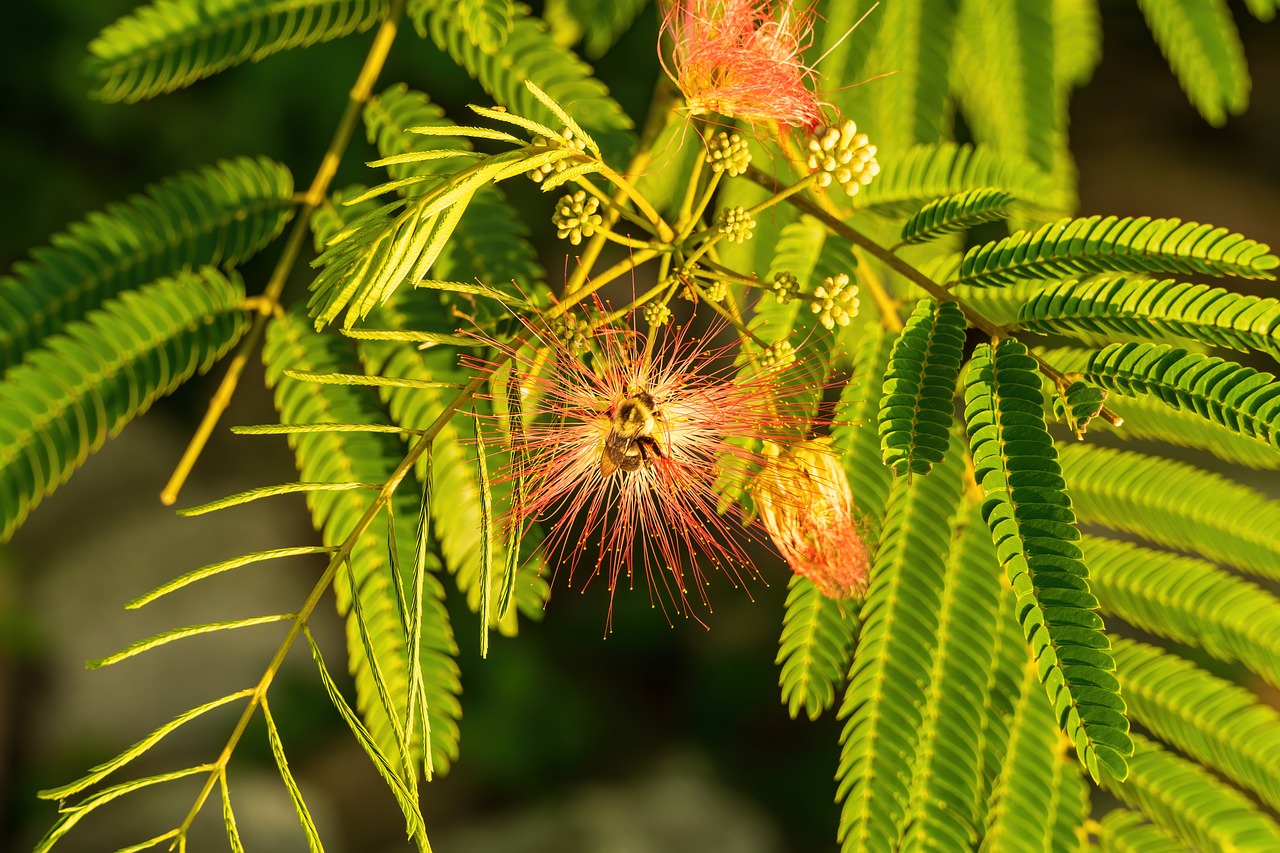
Mimosa hostilis is a flowering shrub that grows in Brazil and Mexico. It can grow over 10 feet high and lives in dry areas, predominantly deserts. It’s an ornamental plant that’s not fussy and has flowers of a lovely color that smell throughout the year.
Mimosa hostilis is fairly easy to grow from seed alone. It’s resistant to disease and to drought – a hardy plant that can withstand severe conditions. That’s because it grows in the desert naturally, where the conditions are harsh throughout the whole year.
Apart from being a good plant for the garden, people also grow Mimosa Hostilis for its root bark.
Mimosa Hostilis Uses
Mimosa Hostilis has a long history of use for various purposes. Its other name is “Tree of the skin” since it has some major benefits for skincare. The Mayan people used Mimosa Hostilis root bark powder for skin lesions for a long time. It’s a powerful antioxidant that helps rejuvenate skin.
It makes the scalp stronger and repairs damaged or weak hair. Mimosa Hostilis also has various healing properties for wounds and skin. It can be used for treating acne, spots, and burns. It can also function as an antibiotic boosting the immune system and treating common diseases like the flu.
Psychedelic Effects
Apart from its healing applications, a lot of people are interested in using its root bark powder recreationally. This powder has psychedelic effects caused by DMT. The effects of Mimosa are very potent, and the user can get a whole new perception of reality.
People often experience visions, but it’s not always the case. However, it always leads to enhanced sensory responses and sensations. The trip can be very intense, but it depends on the dosage and the experience of the user. With a regular dose, most people have experienced similar to lower doses of LSD or psilocybin.
Materials Required for Growing Mimosa Hostilis
As we mentioned, growing Mimosa is fairly easy. No matter what the purpose is, the process is the same. First, you will need adequate materials, including seeds, fertilizer with 10:10:10 ratio, water, some bowl, sand, rake, loppers, pruning saw, potting soil, growing container, perlite, and clingfilm.
7 Steps For Growing Your Mimosa Plant Properly
Preparing the Seeds
Put the seeds into hot (not boiling) water for 30 to 60 minutes. When you notice that they are swelling up, put the seed in a towel and then in a plastic bag with a seal. Put them somewhere inside where there’s no sunlight. In a week, your seed should sprout.
How to Plant Sprouts
When you notice that the sprouts are showing, you can transfer them into growing pots. Your pots need to be at least 2-inch in size. Put perlite in them for about half of their size. Plant the seeds at an inch deep and keep the soil moist. Then, place those pots in a place with direct sunlight. In 14 days, your seedlings should be ready.
Repotting Seedlings is Important
If you’ve done everything properly, your seedlings should be a couple of inches tall. Get larger pots that are 12 inches large and place up to three seedlings deeply. Don’t bury the trunk as it’s still very tender.
Choose The Right Pots for Seedlings
Your pots need to have drainage holes because the plant doesn’t like resting in water. Your pots need to be large enough so that the root can spread and get water, but no water should be resting on the bottom of the pot. Put them in a sunny spot and let them grow for 6 to 12 months.
Monitor Growth
As your seedlings are growing, make sure to monitor for any signs of overwatering or winding roots. Additionally, if you notice that your plant doesn’t have enough space in the pot, repot it into an even larger container.
Transitioning Outdoors
Your seedlings can be ready for outdoors after 6 to 12 months. When they’ve doubled in size, and you notice that the trunk is stronger, it’s time to plant them outside. Look for a good place where your plant can grow. Of course, it requires light, and you should avoid moist ground.
Outdoor Challenges
Avoid planting your Mimosa near concrete or bricks. It has a shallow root that is very aggressive and spreads wide. It will attach to everything around it and damage your structure underneath. Look for mites, webworms, and scale insects as these pests usually attack the plant.
Bottom Line
If you follow these tips, you‘ll grow a healthy Mimosa plant in no time. Not only will it look good, but you’ll also be able to use it for its health benefits and psychoactive properties. However, before you do that, you should learn how to extract DMT properly.
You may also like
CBD Strains: How to Find the Best Strain for You
Side Effects of CBD Oil: What You Need to Know
7 Surprising Benefits of CBD Oil
